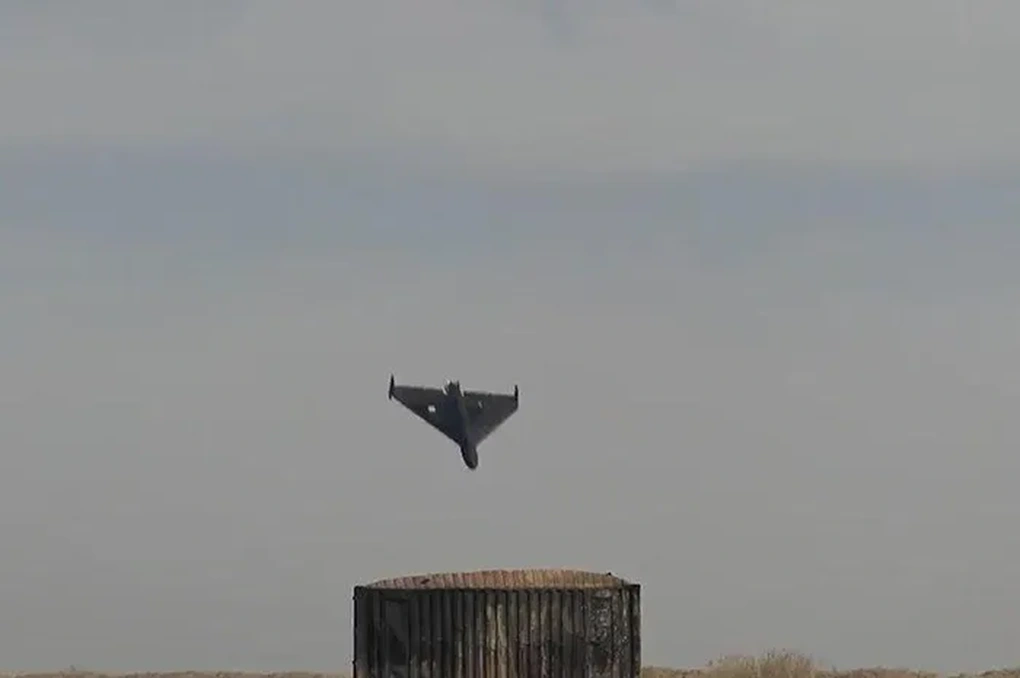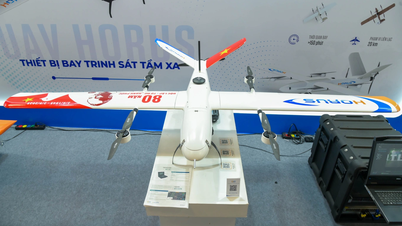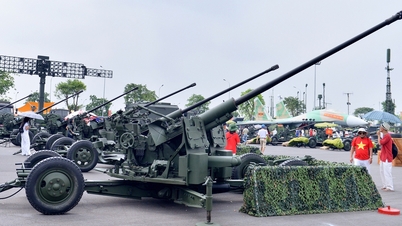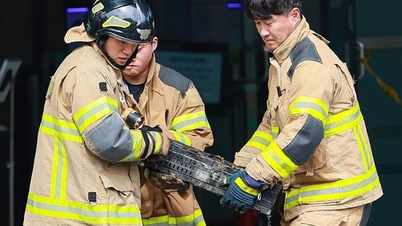
Russia increases suicide UAV attacks in Ukraine (Photo: Reuters).
In recent months, the Ukrainian military has begun using long-range weapons to attack targets in the Crimean peninsula and even into Russian territory. Meanwhile, Russia has also increased its attacks on Ukraine with suicide UAVs.
And during this high-frequency attack, Ukraine discovered a disturbing fact about Russia's Geran-2 stealth suicide UAV: it was painted black and covered with radar-absorbent material.
This innovation poses a higher threat to Ukraine's energy infrastructure as these UAVs can easily avoid detection and interception, especially during night operations.
In a piece of interesting information, the carbon black material used in these UAVs is identified as one of the latest advances applied by Russia on the Geran-2, which is modeled after Iran's Shahed UAV.
The design of this UAV, including a seamless wing-body structure reminiscent of the US B-2 Spirit stealth bomber, as well as the application of lightweight radar-reflecting materials, contributes to their stealth capabilities.
Open source data shows that the radar cross-section of the Shahed-136, the origin of the Geran-2, is comparable to that of a small bird, thus complicating the task of the Ukrainian air defense forces.
While the full effectiveness of the carbon coating in helping this UAV evade radar has not been fully proven, research indicates that the carbon particles in the polyurethane coating can significantly reduce radar reflectivity.
However, the Geran-2 UAV still has flaws, such as vertical stabilizers that reflect radar waves strongly when shined from the side, as well as bright paint that stands out against the sky. That makes them easy to detect on the way to the target.
In an unprecedented attack on November 25, Ukrainian forces claimed to have shot down a significant number of these UAVs, although there has been no independent verification of this figure.
Experts speculate that the Russian UAVs fly low, following rivers to avoid detection and interception, making it difficult for Ukrainian mobile fire units to detect them at night, which rely mainly on observation and searchlights.
This improved stealth capability does not make the Geran-2 completely invisible to radar, but it does significantly reduce the target detection range and opens up many holes in the enemy air defense network.
As Russia continues to produce large numbers of these UAVs, the winter offensive poses a new set of challenges for Ukraine, forcing them to adapt and innovate their defense strategy in the face of growing threats.
Source


![[Photo] Binh Trieu 1 Bridge has been completed, raised by 1.1m, and will open to traffic at the end of November.](https://vphoto.vietnam.vn/thumb/1200x675/vietnam/resource/IMAGE/2025/10/2/a6549e2a3b5848a1ba76a1ded6141fae)



































































































Comment (0)